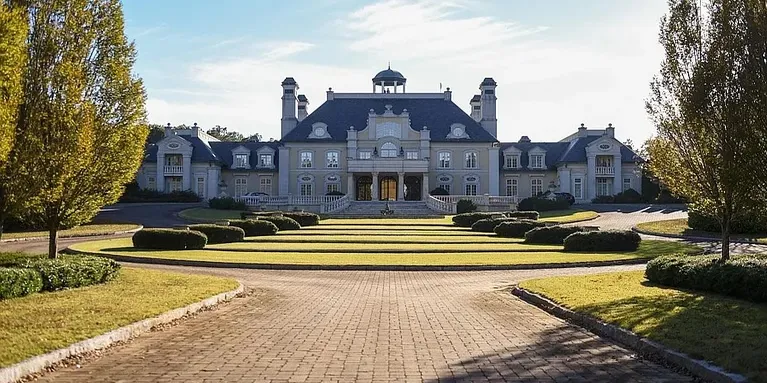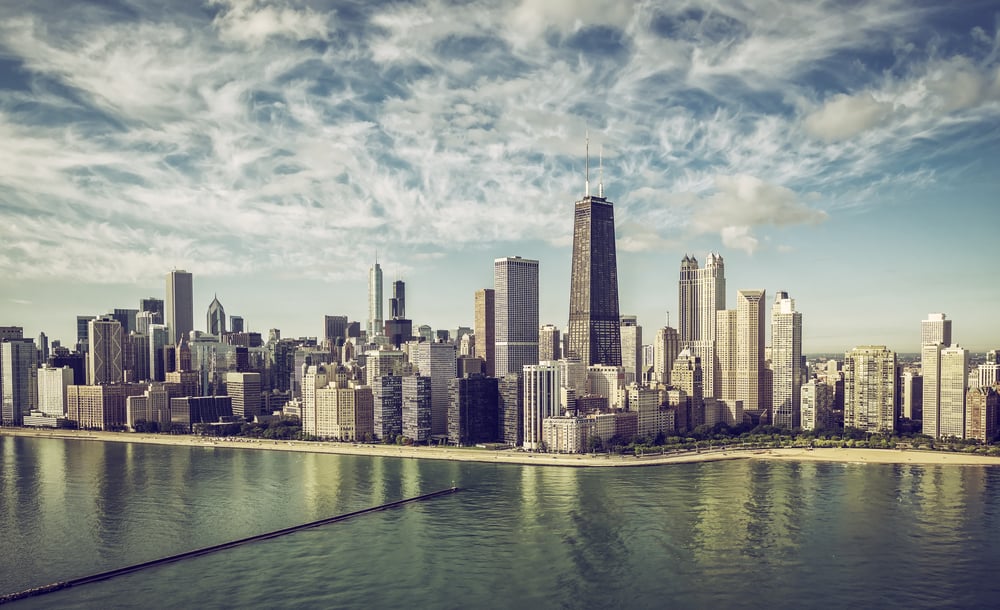The 30 Best Places to Live in Utah: Guide to Top Communities
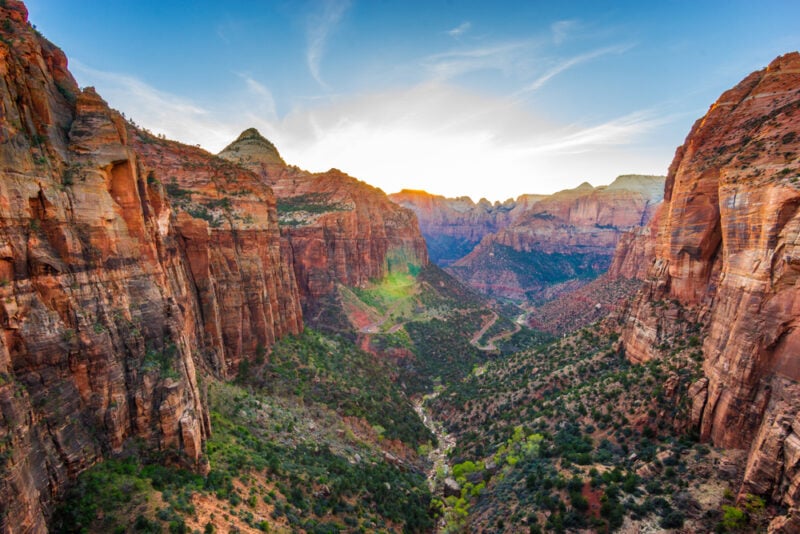
Utah stands out as one of America’s most livable states, offering residents a unique combination of natural beauty, economic opportunity, and strong community values.
From bustling metropolitan areas to charming small towns nestled against mountain backdrops, the state provides diverse options for every lifestyle preference and life stage.
This comprehensive guide examines thirty of Utah’s top communities, analyzing factors such as cost of living, job markets, schools, outdoor recreation, and overall quality of life to help prospective residents make informed decisions.
The analysis covers major cities like Salt Lake City and Provo alongside growing suburbs such as Draper and Lehi, as well as smaller communities that offer their own distinct advantages.
Each location presents unique characteristics that contribute to Utah’s reputation as an exceptional place to call home.
Here are the 30 best places to live in Utah:
30. Midvale
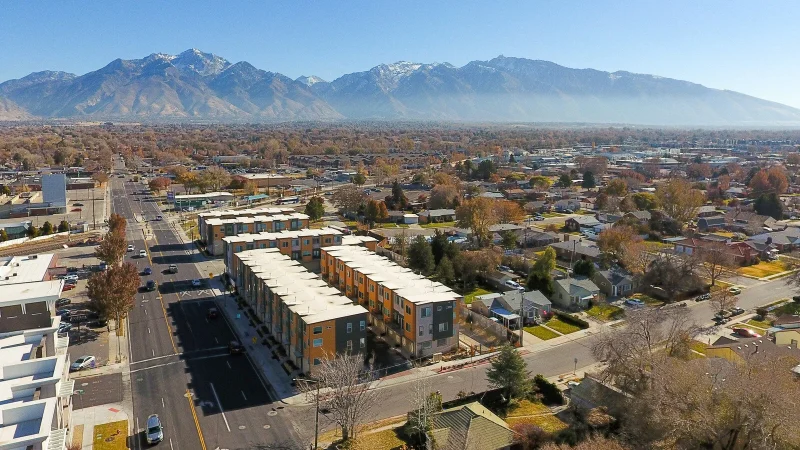
Midvale sits in Salt Lake County as a suburb of Salt Lake City with a population of approximately 35,000 residents. The city offers an urban-suburban mix that attracts both families and young professionals.
Located between the Wasatch Mountains to the east and Salt Lake City to the north, Midvale provides easy access to outdoor recreation and urban amenities. Residents enjoy numerous restaurants, coffee shops, and parks throughout the community.
The city has received positive recognition, earning an A- rating from Niche and ranking as the 22nd best place to retire in Utah. Most residents rent their homes rather than own.
Midvale’s neighborhoods vary significantly in quality and home values. The community tends to have moderate political views and offers good access to public transportation and local amenities.
29. Fruit Heights
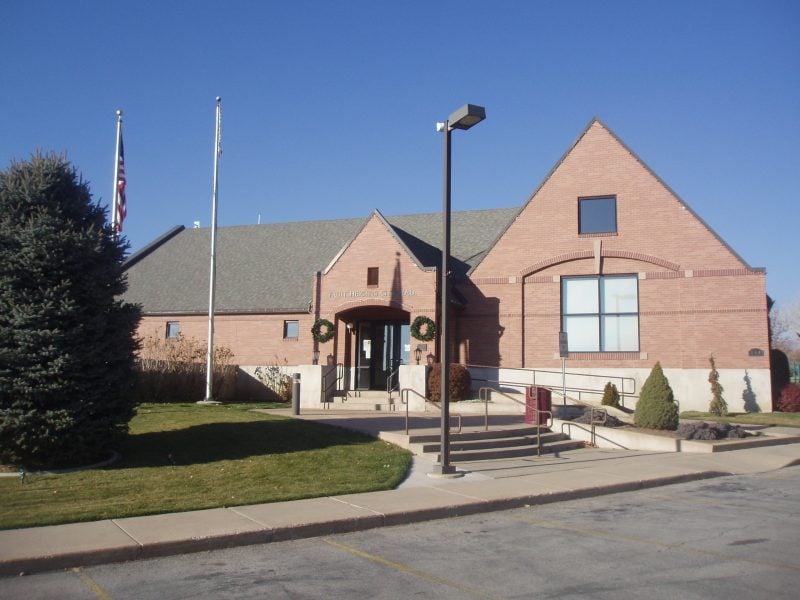
Fruit Heights stands out as one of Utah’s premier suburban communities. This Salt Lake City suburb maintains a population of approximately 6,000 residents in Davis County.
The city offers a rural atmosphere while providing urban conveniences. Most residents own their homes in this family-friendly environment.
Fruit Heights boasts impressive economic indicators. The typical household earns $98,438 annually, significantly above the national median of $67,500. The poverty rate sits at just 3.6%, which is 74% lower than the national average.
Safety and community strength define daily life here. The area features numerous parks and maintains safe neighborhoods throughout the city.
Commuting remains convenient with easy highway access. Residents enjoy proximity to Station Park and other regional amenities while preserving the peaceful suburban character that makes Fruit Heights attractive to families.
28. Farmington
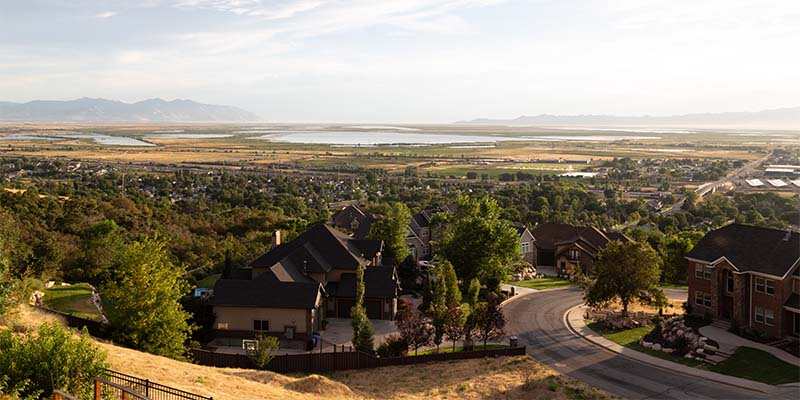
Farmington stands out as one of Utah’s premier suburban communities with a population of 24,934. The city sits strategically between the Wasatch Mountains and the Great Salt Lake in Davis County.
BestPlaces ranks Farmington with an impressive 7.3 out of 10 rating. This score reflects strong performance in housing affordability, safety, job availability, and weather conditions.
The community offers residents a sparse suburban atmosphere where most people own their homes. Farmington provides abundant parkland and recreational opportunities for families.
Home prices in Farmington exceed Utah’s state average of $361,191. The higher costs reflect the desirable location and quality amenities available to residents.
Farmington combines small-town charm with access to big-city conveniences. The location provides world-class outdoor activities and maintains a high quality of life for residents seeking suburban living near Salt Lake City.
27. Tooele

Tooele sits just west of Salt Lake City, offering residents a small-city atmosphere with access to metropolitan amenities. The city has earned recognition as the 13th best place to live in Utah according to BestPlaces rankings.
Cost of living remains below the national average, making it an attractive option for budget-conscious residents. Housing availability is generally good compared to other Utah cities.
The proximity to Salt Lake City provides employment opportunities and entertainment options. Residents can commute to the larger city while enjoying lower housing costs.
Public schools and healthcare services meet community needs. Crime rates contribute positively to the city’s livability scores.
Tooele benefits from Utah’s outdoor recreation opportunities, including nearby mountains and desert landscapes. The area experiences typical high-desert climate conditions throughout the year.
26. Magna

Magna is a small community in Salt Lake County with approximately 27,000 residents. The city offers a lower cost of living compared to nearby Salt Lake City while maintaining access to urban amenities.
The median household income is around $59,000, which falls below the national average. However, the poverty rate of 10.1% is notably lower than the national figure.
Residents enjoy outdoor recreation opportunities at Great Salt Lake for camping and fishing. The Nevada Valley provides hiking trails and scenic mountain views.
The community maintains a median age of 30, reflecting Utah’s younger demographic trends. Housing costs vary significantly across different neighborhoods within the city.
Magna serves as a quiet suburban alternative to Salt Lake City living. The area provides basic amenities while offering proximity to larger metropolitan resources and employment opportunities.
25. North Salt Lake
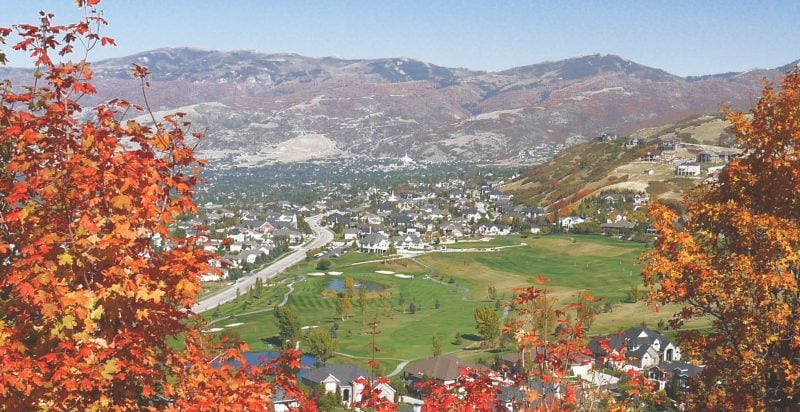
North Salt Lake earns recognition as one of Utah’s premier residential destinations. The city receives an overall livability score of 8.9 out of 10 with an A+ ranking.
Crime rates remain notably low compared to other Utah cities. This creates a safe environment for families and professionals alike.
Home values in North Salt Lake align closely with Utah’s state average of $361,191. The real estate market has experienced a 10% increase in home values over the past year.
Residents commonly refer to the city by its nickname “NSL.” The area offers convenient access to Salt Lake City while maintaining its own distinct character.
Housing options include single-family homes, townhouses, and apartments. The diverse property types accommodate various lifestyle preferences and budgets throughout the community.
24. Kaysville
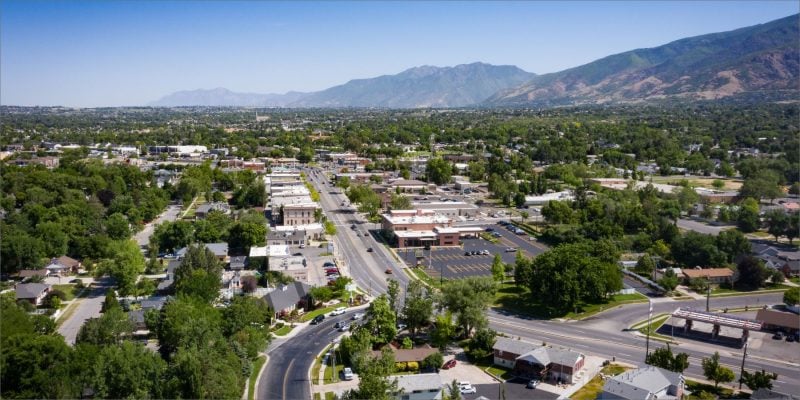
Kaysville ranks among Utah’s safest and most peaceful communities. This Davis County city sits 40 miles north of Salt Lake City with a population of approximately 32,000 residents.
The city offers residents a suburban feel with rural characteristics. Most residents own their homes and enjoy access to numerous parks throughout the area.
Kaysville’s poverty rate stands at just 3.2%, significantly lower than the national average. The typical household earns $103,730 annually, well above the national median income.
Salt Lake City remains easily accessible, with commute times under 30 minutes. This proximity provides employment opportunities while maintaining small-town living.
The historic Kaysville Theatre serves as a popular entertainment venue in the city center. Residents appreciate the blend of community attractions and natural beauty surrounding the area.
23. West Valley City

West Valley City stands as Utah’s second-largest city with a population of 135,610 residents. The city offers affordable housing options with home prices below the state average of $361,191.
Residents enjoy a diverse and family-friendly environment. The poverty rate sits at 11.7%, which is 16% lower than the national average.
Hunter and Westbrook rank among the most desirable neighborhoods. Hunter features well-maintained parks and recreational facilities near shopping centers. Westbrook provides a quiet residential atmosphere with a strong community feel.
The climate brings pleasant weather in September, June, and May. January and December present the least comfortable conditions for residents.
West Valley City’s location in north-central Utah provides distinctive geographical advantages. The city combines diversity, affordability, and accessibility for families and individuals seeking quality living options in Utah.
22. Roy

Roy sits as a suburb of Ogden, offering residents a blend of urban conveniences and rural charm. The city provides beautiful mountain views that enhance daily living.
Located just 30 minutes from Salt Lake City, Roy delivers suburban lifestyle benefits with easy access to metropolitan amenities. This proximity makes it attractive for commuters seeking quieter residential areas.
The community emphasizes family-friendly living with affordable housing options. Roy maintains a strong sense of safety that appeals to families and young professionals alike.
Residents enjoy access to various parks and quality schools throughout the area. The city’s educational system supports families looking for good academic opportunities for their children.
Roy’s neighborhoods vary in quality and home values across different areas. This variation provides housing options for different budget ranges and lifestyle preferences.
21. Spanish Fork
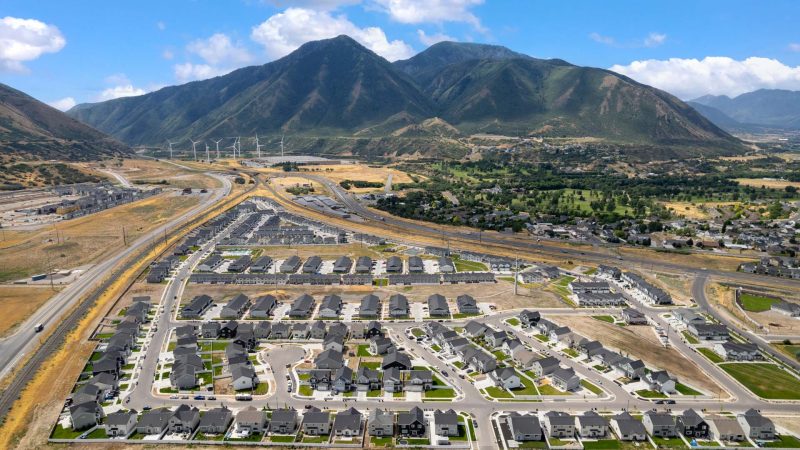
Spanish Fork ranks 28th out of 72 suburbs for best places to live in Utah. The city combines small-town charm with access to outdoor recreation in Utah Valley.
Home prices in Spanish Fork align closely with Utah’s state average of $361,191. This pricing makes the area accessible for many homebuyers seeking value.
The city ranks among Utah’s safest communities with low crime rates. Families appreciate the secure environment and strong sense of community.
Spanish Fork offers excellent public schools, ranking 30th out of 72 Utah suburbs for educational quality. The family-friendly atmosphere attracts residents seeking quality education options.
Outdoor enthusiasts find abundant recreational opportunities in the surrounding area. The location provides convenient access to hiking, camping, and other mountain activities.
Spanish Fork maintains a strong community identity while offering modern amenities and services for residents.
20. Springville
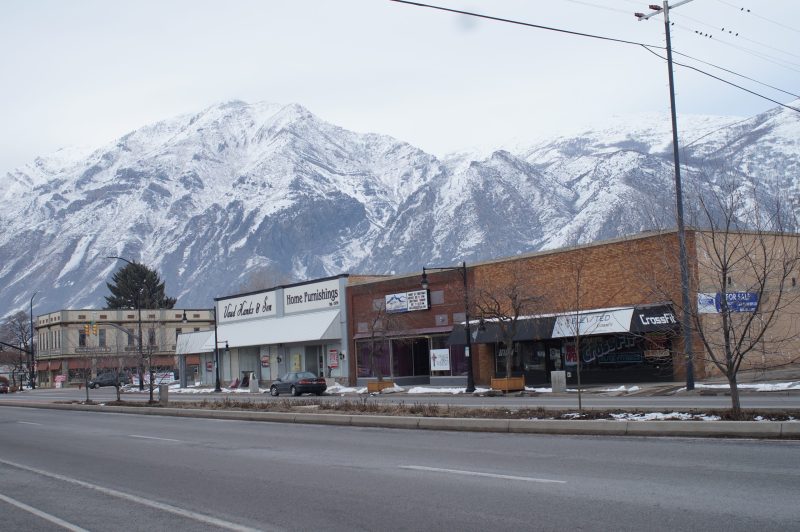
Springville serves as a suburban community near Provo with a population of approximately 35,000 residents. The city functions as a bedroom community for Provo-Orem area commuters.
The area attracts young families and professionals seeking a suburban-rural lifestyle. Most residents own their homes rather than rent.
Springville earned the nickname “Utah’s Art City” due to its active arts and music scene. The community maintains numerous parks and recreational spaces throughout the city.
Public schools in Springville perform above average compared to state standards. The median household income reaches $68,846 with relatively low unemployment rates.
The city experiences four distinct seasons with generally mild temperatures. Winter months bring occasional snow storms to the region.
Housing quality varies significantly across different neighborhoods within Springville. The best areas typically correlate with higher median home values and lower crime rates.
19. Layton
Layton ranks among Utah’s top cities for quality of life. This Davis County community houses approximately 77,000 residents in northern Utah.
The city offers excellent public schools, ranking 22nd among Utah suburbs for educational quality. Families find Layton particularly appealing for raising children.
Median household income reaches $81,067, significantly above the national average of $67,500. The poverty rate sits at just 7%, which is 50% lower than national levels.
Housing costs remain reasonable compared to median incomes. The city provides better value than similarly sized communities across the nation.
Layton features small-town charm with modern amenities. Residents enjoy numerous parks, recreational activities, and convenient shopping options throughout the year.
The city maintains low crime rates and high public safety standards. This combination of safety, education, and economic stability makes Layton attractive to new residents.
18. Logan
Logan sits in Cache Valley and serves as home to Utah State University. The city combines college town energy with outdoor recreation opportunities in the surrounding mountains.
Residents enjoy access to skiing, hiking, and fishing within a short drive. The nearby mountains provide year-round recreational activities for outdoor enthusiasts.
The city offers cultural amenities including restaurants, shopping centers, and museums. Utah State University contributes to the local arts and entertainment scene.
Logan’s location provides a rural feel while maintaining urban conveniences. The downtown area features local businesses and dining options that serve both students and permanent residents.
The city’s median household income is $43,056, which is below the national average. Logan has a poverty rate of 26.2%, largely influenced by its student population.
Housing costs remain relatively affordable compared to other Utah cities. The presence of the university creates a steady rental market for both students and families.
17. Millcreek
Millcreek stands out as one of Utah’s premier suburban communities with a population of 63,342 residents. This Salt Lake County city offers a dense suburban atmosphere where most residents own their homes.
The city provides excellent access to outdoor recreation. The Wasatch Mountains sit just 15 minutes east, offering world-class hiking and skiing opportunities year-round.
Millcreek’s location creates ideal commuting conditions. Residents enjoy easy access to downtown Salt Lake City businesses and the University of Utah, with southern suburbs within a 30-minute drive.
The community features abundant amenities including numerous coffee shops and parks throughout the area. Families can attend Salt Lake Bees minor league baseball games during summer months.
The city attracts a diverse population drawn to its scenic mountain views and family-friendly activities. Millcreek combines suburban comfort with urban accessibility, making it an attractive option for various lifestyles.
16. West Jordan
West Jordan ranks as the 5th best place to live in Utah and 247th nationally out of nearly 900 cities evaluated. This Salt Lake City suburb houses 116,277 residents in Salt Lake County.
The city offers a dense suburban atmosphere where most residents own their homes. Families and young professionals make up the majority of the population, which tends to lean conservative politically.
West Jordan provides numerous parks throughout the community. The public school system performs above average compared to state standards.
Housing values vary significantly across different neighborhoods within the city. The real estate market reflects diverse options for various income levels and preferences.
Residents enjoy proximity to Salt Lake City while maintaining a suburban lifestyle. The location provides access to urban amenities without sacrificing neighborhood feel.
15. Pleasant Grove
Pleasant Grove sits in Utah County as a suburb of Provo with a population of 37,544. The city earns its motto “Utah’s City of Trees” through its abundant greenery and natural beauty.
This residential community offers a dense suburban feel where most residents own their homes. The area attracts many families and young professionals seeking a quieter lifestyle.
Pleasant Grove features an extensive network of parks and trails throughout the city. Public schools in the area perform above average compared to state standards.
The community maintains a quiet, family-centric atmosphere while experiencing steady business growth. Home prices align closely with Utah’s state average of $361,191.
Residents enjoy access to attractions like the Tonaquint Nature Center and Four Mile Trailhead. The city’s location in Utah County provides convenient access to larger metropolitan areas while preserving its small-town character.
14. Cottonwood Heights
Cottonwood Heights sits as a prominent Salt Lake City suburb with 32,984 residents. The city earned recognition in Money magazine’s Best Places to Live list at #100 in 2007.
This Salt Lake County community ranks among Utah’s top living destinations. Home prices exceed the state average of $361,191, reflecting the area’s desirability and market demand.
The city offers access to quality dining establishments including Market Street Grill and Hoppers Brewpub. Residents enjoy proximity to outdoor recreation with the city positioned between two canyons.
Cottonwood Heights provides suburban amenities while maintaining close access to Salt Lake City’s urban resources. The community attracts families and professionals seeking a balance between residential comfort and metropolitan convenience.
The area’s location offers both mountain access and valley living benefits.
13. Herriman
Herriman stands out as one of Utah’s most desirable residential communities. The city offers a peaceful environment with low crime rates and excellent schools.
The community maintains a strong sense of belonging among residents. Families particularly appreciate the quality educational options, including proximity to Mountain Vista Elementary School and Riverton High School.
Natural beauty surrounds Herriman with numerous parks and outdoor recreational opportunities. Residents enjoy easy access to hiking and biking trails throughout the area.
Housing remains more affordable compared to many Utah cities. The neighborhoods vary significantly in quality and home values across different areas of the city.
Herriman received a livability score of 85 out of 100 based on multiple factors. These metrics include crime rates, cost of living, health and safety measures, and housing quality.
12. Murray
Murray sits in Salt Lake County just outside Salt Lake City, offering residents convenient access to urban amenities while maintaining its own community identity. The city features numerous parks and recreational areas that appeal to outdoor enthusiasts.
Murray Springs Park and the Kokopelli Downhill Mountain Bike Trails provide excellent recreation opportunities for residents. The Jordan River Parkway trail runs through the area, perfect for fishing and walking activities.
The city’s location gives residents easy access to the Wasatch Mountains for hiking and skiing. Murray’s proximity to Salt Lake City means shorter commutes for those working in the larger metropolitan area.
Housing costs in Murray vary significantly by neighborhood, with some areas commanding higher home values than others. The city maintains good schools and offers a family-friendly environment with plenty of green spaces for children and adults.
11. Lehi
Lehi stands as one of Utah’s premier suburban communities with a population of 81,039 residents. The city ranks among the top five places to live in Utah according to recent rankings.
Located in Utah County, Lehi sits just 30 miles from Salt Lake City and 13 miles from Orem. This positioning provides residents access to big-city amenities while maintaining a small-town atmosphere.
The median household income reaches $101,429, significantly higher than the national average of $67,500. Only 15.9% of households earn less than $50,000 annually, compared to 39% nationally.
Lehi offers several desirable neighborhoods including Historic Downtown with its mix of historic and modern homes. Ivory Ridge provides family-friendly amenities, while Jordan Willows features newer developments with modern housing options.
The city attracts many families and young professionals who appreciate the sparse suburban feel and numerous parks. Most residents own their homes in this conservative-leaning community.
10. South Jordan
South Jordan ranks as one of Utah’s most desirable places to live. Located in the Salt Lake Valley, this city offers residents excellent schools and low crime rates.
The median home price sits at $370,100, reflecting the area’s popularity among families. Modern amenities and shopping centers provide convenience for daily needs.
Residents enjoy easy access to outdoor activities throughout the region. The city’s location within the Salt Lake City metropolitan area offers employment opportunities while maintaining a suburban atmosphere.
South Jordan’s quality of life attracts families seeking a safe environment. The community provides well-maintained neighborhoods with varying price points across different areas.
The city combines family-friendly amenities with proximity to Utah’s recreational opportunities. Strong educational systems and community services make it particularly appealing to households with children.
9. Provo
Provo offers residents a dense suburban feel with a population of 114,303. The city sits between the Wasatch Mountains and Utah Lake, providing beautiful mountain and valley views.
Most residents rent their homes in this college town. Brigham Young University brings a youthful energy and cultural attractions to the area.
The city features several desirable neighborhoods. Grandview provides family-friendly living with mountain views, while Edgemont offers quiet residential streets with larger homes.
Downtown Provo combines historic and modern housing options. Oak Hills represents upscale living with beautiful homes, and Riverwoods provides modern development near shopping and dining.
Provo attracts many families and young professionals. The city maintains numerous parks and offers plenty of outdoor activities due to its mountain location.
Residents tend to be conservative in this Utah County community. The area provides affordable living costs and maintains low crime rates throughout most neighborhoods.
8. Ogden
Ogden sits at the base of the Wasatch Mountains near the Great Salt Lake. The city combines outdoor recreation opportunities with urban amenities and affordable living costs.
Weber State University calls Ogden home, along with two major hospitals. Hill Air Force Base operates just south of the city, providing economic stability to the region.
Job growth projections exceed 7% for the coming years. The tech industry shows promise as companies from Salt Lake City seek more affordable markets.
Historic 25th Street stands as one of Ogden’s most popular neighborhoods. This area features shops, restaurants, and preserved historic buildings that give it distinctive character.
The revitalized downtown offers modern conveniences while maintaining the city’s historic charm. Housing costs remain reasonable compared to other Utah metropolitan areas.
Mountain access provides hiking, skiing, and outdoor activities year-round. The location offers both recreational opportunities and practical city living.
7. St. George
St. George sits in southwestern Utah near the Arizona and Nevada borders. The city attracts residents with its red rock landscapes and mild winter climate.
The population of 99,184 enjoys a sparse suburban atmosphere where most residents own their homes. Young professionals and retirees make up significant portions of the community.
Home prices have increased substantially in recent years. Average prices rose from around $300,000 to approximately $550,000 over six to seven years due to increased migration from western states.
The area offers extensive outdoor recreation opportunities and maintains numerous parks throughout the city. Public schools perform above average compared to state standards.
Popular neighborhoods include downtown’s historic district, family-oriented Little Valley, and upscale Stone Cliff. Master-planned communities like Sunriver provide resort-style amenities for residents seeking additional recreational facilities.
6. Orem
Orem stands as one of Utah’s premier residential destinations with a population of approximately 97,000 residents. The city consistently ranks among the safest places in Utah, holding third place statewide for low crime rates.
Located in Utah County, Orem offers residents stunning mountain views and abundant recreational opportunities. The city features numerous parks, walking trails, and golf courses that attract outdoor enthusiasts.
The community maintains a dense suburban atmosphere where most residents own their homes. Families and young professionals comprise the majority of the population, drawn by the city’s reputation for quality of life.
Orem’s strong sense of community and friendly atmosphere create an appealing environment for newcomers. The city provides easy access to outdoor activities while maintaining urban conveniences and amenities that support daily living.
5. Salt Lake City
Salt Lake City offers residents a compelling blend of urban amenities and natural beauty. The city sits surrounded by mountain views and the Great Salt Lake, providing stunning scenery year-round.
The downtown area features a thriving arts scene and numerous cultural attractions. Residents enjoy access to theaters, museums, and music venues throughout the city.
Outdoor enthusiasts find excellent recreational opportunities nearby. World-class skiing, hiking, and mountain biking are all within easy reach of the city.
The Avenues neighborhood stands out as one of the top residential areas. This historic district northeast of downtown earned high ratings for schools, commute times, and family-friendly amenities.
Housing costs remain relatively affordable compared to other major western cities. The median home value sits around $462,000, while rental options provide flexibility for newcomers.
Salt Lake City maintains a reputation for friendly, welcoming communities across its diverse neighborhoods.
4. Sandy
Sandy offers residents a perfect balance between suburban comfort and urban accessibility. The city sits just south of Salt Lake City, providing easy access to metropolitan amenities while maintaining its own distinct character.
The Wasatch Mountains provide Sandy residents with world-class skiing and snowboarding opportunities. Multiple ski resorts are located within a short drive from the city center.
Sandy’s neighborhoods vary significantly in quality and home values. The real estate market reflects strong demand, with the best areas commanding premium prices due to their desirability and location.
The city earned recognition as the 30th best place to live in the United States according to 24/7 Wall St. This ranking reflects Sandy’s combination of safety, amenities, and quality of life factors.
Residents appreciate Sandy’s small-town atmosphere combined with big-city conveniences. The proximity to outdoor recreation and Salt Lake City makes it attractive for families and professionals.
3. Bountiful
Bountiful sits in Davis County and offers residents a blend of urban amenities and natural beauty. The city maintains a population of approximately 44,000 people.
The median household income reaches $83,660, which exceeds the national average of $67,500. Bountiful’s poverty rate stands at 4.9%, significantly lower than national figures.
Housing values vary considerably across different neighborhoods within the city. The best neighborhoods typically feature lower crime rates and higher quality of life standards.
Residents choose Bountiful for its charming atmosphere and high quality of life. The city provides access to both city conveniences and outdoor recreation opportunities.
Bountiful ranks among Utah’s notable places to live, though it faces competition from other desirable cities throughout the state.
2. Draper
Draper has transformed from a small town of 7,000 residents in 1990 to a thriving city of approximately 51,000 people. The city sits in the heart of Silicon Slopes, Utah’s premier technology corridor.
The median household income reaches $112,541, significantly higher than the national average. The poverty rate stands at just 4.7%, well below national levels.
Draper offers excellent access to outdoor recreation through Corner Canyon trails and nearby mountain activities. The city maintains numerous parks and green spaces throughout its neighborhoods.
Several distinct areas define Draper’s residential landscape. SunCrest provides mountain living with panoramic views, while Corner Canyon offers proximity to hiking trails.
The technology sector drives much of Draper’s economic growth. Multiple established tech companies and expanding startups have chosen the city for their operations, creating diverse employment opportunities for residents.
1. Park City
Park City stands out as Utah’s premier mountain town with a population of 8,365 residents. The city offers an urban suburban feel where most residents own their homes.
Located in Summit County, Park City provides stunning views of the Wasatch Mountains. A world-class ski resort sits right in town, making it one of the country’s top winter destinations.
The city maintains excellent year-round recreation opportunities. Residents enjoy skiing, snowboarding, hiking, and mountain biking throughout the seasons.
Park City features numerous bars, restaurants, and coffee shops. The town successfully balances small-town charm with big-city amenities.
Families benefit from quality schools and family-friendly activities. The area consistently ranks among Utah’s best places to live.
The community attracts residents seeking outdoor lifestyles without sacrificing convenience. Park City delivers both recreational opportunities and modern amenities in one location.
Key Factors That Make Utah Livable
Utah’s appeal stems from its balanced housing costs, strong educational institutions, diverse employment opportunities, and comprehensive healthcare infrastructure. These elements combine to create communities that attract families, professionals, and retirees seeking quality living environments.
Cost of Living and Housing Market
Utah maintains a competitive cost of living compared to many western states. The median home price varies significantly across regions, with smaller cities often offering more affordable options than metropolitan areas.
Housing costs typically consume 25-30% of household income in most Utah communities. Property taxes remain relatively low, averaging 0.62% of assessed value statewide.
Key Housing Market Indicators:
- Median home prices range from $300,000 in smaller towns to $600,000+ in premium areas
- Rental markets offer diverse options from $800-2,500 monthly
- Property appreciation rates have stabilized after recent volatility
Utility costs benefit from the state’s energy resources and infrastructure. Transportation expenses remain moderate due to well-planned urban development and public transit systems in major metropolitan areas.
Education and School Quality
Utah consistently ranks among the top states for education funding efficiency and student outcomes. The state allocates significant resources to public education while maintaining fiscal responsibility.
Public school districts achieve strong performance metrics across standardized testing and graduation rates. Many districts offer specialized programs including STEM, arts, and career technical education pathways.
Higher education institutions provide extensive opportunities throughout the state. The University of Utah, Utah State University, and Brigham Young University anchor a robust post-secondary landscape.
Education Highlights:
- High school graduation rate exceeds 87%
- Per-pupil spending efficiently allocated
- Strong teacher retention rates
- Extensive higher education network
Job Opportunities and Economy
Utah’s economy demonstrates remarkable diversity across multiple sectors. Technology companies, healthcare organizations, financial services, and manufacturing firms create varied employment opportunities.
The state maintains consistently low unemployment rates, typically 1-2 percentage points below national averages. Job growth occurs across skill levels, from entry-level positions to executive roles.
Major employers include tech giants, aerospace companies, and healthcare systems. The business-friendly environment attracts startups and established corporations seeking expansion opportunities.
Economic Strengths:
- Technology sector concentration
- Healthcare and life sciences growth
- Tourism and outdoor recreation industries
- Strong entrepreneurial ecosystem
Healthcare Access and Quality
Utah’s healthcare infrastructure serves residents through comprehensive medical networks. Major hospital systems operate throughout the state, ensuring access to specialized care and routine services.
Intermountain Healthcare and University of Utah Health anchor the state’s medical landscape. These systems provide everything from primary care to advanced surgical procedures and research facilities.
Healthcare costs remain competitive compared to national averages. Insurance coverage rates exceed national benchmarks, supported by strong employer-sponsored programs and state initiatives.
The state emphasizes preventive care and wellness programs. Many communities benefit from specialized facilities focusing on cardiac care, cancer treatment, and orthopedic services related to active lifestyles.
Utah Lifestyle and Community
Utah offers a unique lifestyle centered on world-class outdoor recreation, from Powder Mountain’s ski slopes to Zion National Park’s hiking trails. The state maintains strong community safety with crime rates below national averages and vibrant arts scenes anchored by venues like the Utah Symphony and Sundance Film Festival.
Outdoor Recreation and Natural Environment
Utah’s geography creates unparalleled outdoor recreation opportunities across five national parks and numerous ski resorts. The state receives over 400 inches of annual snowfall in mountain regions, supporting world-renowned skiing at resorts like Park City and Alta.
Summer Activities:
- Hiking in Zion, Arches, and Capitol Reef National Parks
- Mountain biking in Moab’s red rock terrain
- Camping in the Uinta Mountains
- Rock climbing at Little Cottonwood Canyon
Winter Recreation:
- Skiing and snowboarding at 15+ resorts
- Cross-country skiing in national forests
- Snowshoeing in backcountry areas
The Great Salt Lake provides unique recreational experiences including sailing and bird watching. Utah’s desert regions offer year-round hiking and off-road vehicle access.
Most Utah cities sit within 30 minutes of mountain access. This proximity allows residents to ski in the morning and golf in the afternoon during spring months.
Cultural and Arts Scene
Salt Lake City anchors Utah’s cultural landscape with professional performing arts organizations and venues. The Utah Symphony performs at Abravanel Hall, while the Utah Opera and Ballet West provide classical entertainment options.
The Sundance Film Festival transforms Park City each January, attracting international filmmakers and celebrities. This event generates significant cultural and economic impact statewide.
Key Cultural Venues:
- Natural History Museum of Utah
- Utah Museum of Fine Arts
- Eccles Theater for Broadway productions
- Red Butte Garden Amphitheatre for outdoor concerts
Smaller communities maintain active arts scenes. Moab hosts music festivals, while St. George offers theater productions and art galleries.
Utah’s pioneer heritage influences local culture through historical sites and festivals. Temple Square attracts millions of annual visitors for its architecture and cultural significance.
Community Safety and Wellbeing
Utah consistently ranks among the safest states with violent crime rates significantly below national averages. Most Utah cities report property crime rates 20-30% lower than comparable metropolitan areas nationwide.
Community policing programs operate in major cities like Salt Lake City, Provo, and Ogden. These initiatives build relationships between law enforcement and residents through neighborhood engagement.
Safety Indicators:
- Violent crime rate: 2.9 per 1,000 residents (national average: 4.0)
- Property crime rate: 21.4 per 1,000 residents (national average: 24.0)
- Traffic fatality rate below national average
Utah’s strong sense of community stems from high volunteerism rates and neighborhood organizations. Many areas feature active homeowner associations and community groups that organize events and maintain local standards.
The state’s emphasis on family values creates supportive environments for raising children. Public spaces like parks and recreation centers receive consistent community investment and maintenance.


